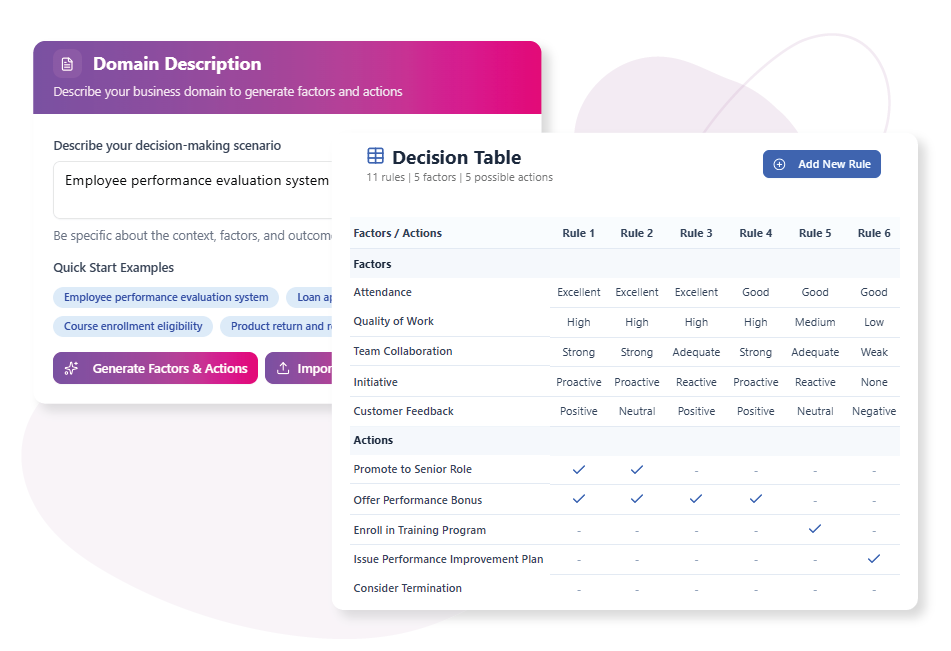Now Reading: From Concept to Code: Integrating Decision Table into Your Workflow
-
01
From Concept to Code: Integrating Decision Table into Your Workflow
From Concept to Code: Integrating Decision Table into Your Workflow
In modern software development, the journey from a business idea to a functional piece of code is often fraught with miscommunication. Requirements can get lost in documentation, misunderstood in meetings, and misinterpreted during implementation. The Decision Table Generator solves this by creating a single, collaborative document that serves as a direct bridge between business logic and technical execution, streamlining your entire workflow.

A Single Source of Truth
The first step in any successful project is establishing a clear, shared understanding of the problem. Instead of relying on lengthy, text-based documents that are prone to ambiguity, the decision table provides a visual, definitive source of truth. It outlines every possible condition and the precise action that should follow. This clarity ensures that product managers, developers, and QA engineers are all working from the exact same playbook, eliminating guesswork and drastically reducing the risk of errors later in the cycle.
Seamless Developer Handoff
For developers, the decision table is more than just a reference—it’s a tool for automation. The platform allows you to export your logic in structured formats like JSON or CSV. This means a developer doesn’t have to manually write complex if-else or switch-case statements from scratch. Instead, they can use the exported data to dynamically generate the logic in their code. This capability not only saves countless hours of development time but also ensures that the code directly mirrors the agreed-upon business rules, minimizing logical bugs from the outset.
Automated Testing and Quality Assurance
The decision table provides a complete and unambiguous test plan for quality assurance teams. Each row in the table represents a unique scenario with its corresponding outcome. QA can use this as a definitive checklist to verify that every condition and action works as expected. This structured approach helps identify edge cases that might have otherwise been overlooked, leading to more robust and reliable software. The table’s transparency also simplifies the bug-reporting process, as QA can simply reference a specific row to show the exact conditions under which an issue occurred.
Agile and Iterative Development
The platform is designed to support the dynamic nature of agile development. As business requirements change or new scenarios are identified, teams can update the decision table in real-time.
The built-in version history allows for complete transparency, so you can see who made changes and when, and even revert to a previous state if a change needs to be rolled back.
This flexibility means your logic is always up-to-date and your team can respond to feedback and new information quickly without causing workflow disruptions.


